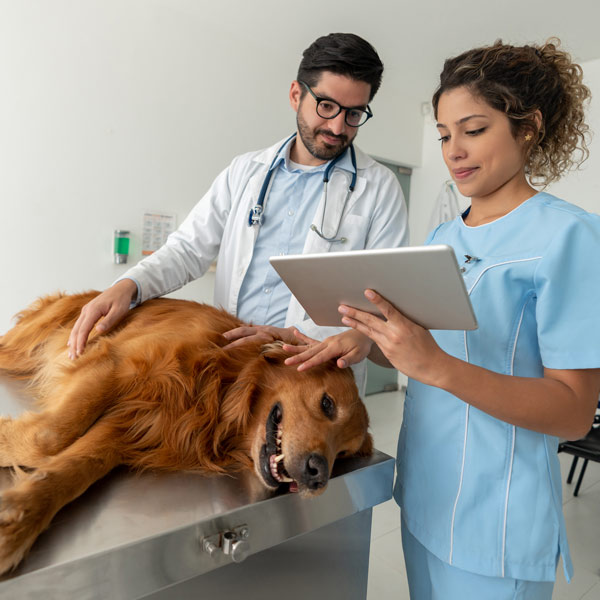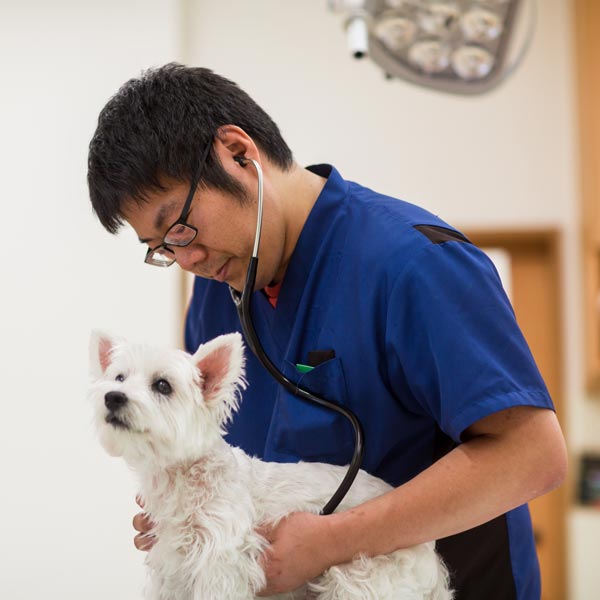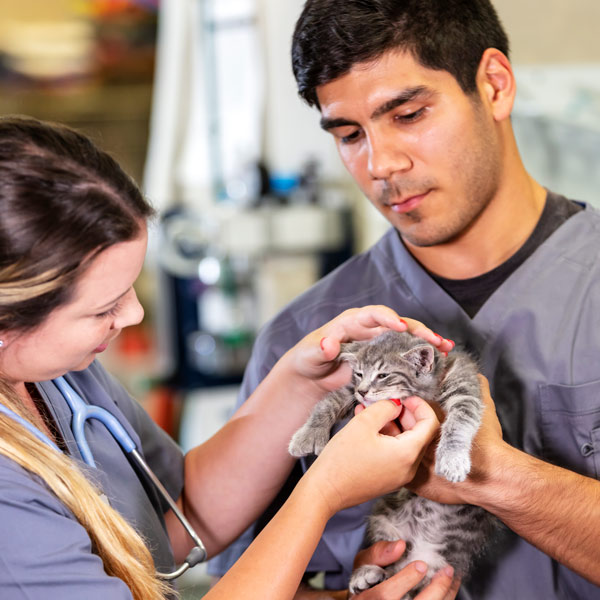Veterinary Assistant
Handle Routine Animal Care and General Treatment Under the Care of a Veterinarian
Program Flyer Steps for Enrollment Pickens Lookbook See the Classroom

Our Students Learn
- Veterinary medical terminology
- How to handle dogs & cats for exams, vaccines, blood draws, and medical treatments
- Animal body language and communication
- Preventative care for cats & dogs
- How to prepare animals for surgical procedures
- How to identify yeast, bacteria, and egg parasites with a microscope

Career Outlook
- Employment opportunity in this field is 9 times higher than the national average of a job
- Entry level salaries start at $26,000 and up
- Median salary is $30,000
- 10% of workers earn $40,000 or more

Program Experience
- Students spend 50% of their time learning concepts in a classroom, and 50% of their time with hands-on practical work
- Students gain experience in a simulated veterinary environment with industry grade equipment
- Enrollment options are available for both high school students and post-secondary students
- 1 year of classes
Adriana (Adi) Martinez
Instructor, Veterinary Assistant
303-344-4910 ext. 27919
amartinez1@aurorak12.org
Industry Certifications & Degrees:
- RVT (Registered Veterinary Technician)
- Fear Free Certified Veterinary Professional
Accredited Certificate Courses (26 Credits)
All credits earned at Pickens technical college are recognized by the Colorado Community College System (CCCS), and are eligible for transfer to other colleges within the state of Colorado.
Introduces the student to the structure of veterinary medical terms with emphasis on using and combining the most common prefixes, roots, and suffixes. Includes terms related to major body systems, oncology, psychiatry, as well as clinical laboratory and diagnostic procedures and imaging. Class structure provides accepted pronunciation of terms and relative use in the veterinary-specific setting.
Introduces students to basic animal care skills and clinical procedures common to a veterinary assistant in practice. Laboratories provide practice in restraint, grooming and physical exam techniques.
Presents commonly encountered medical and surgical conditions of common large animal species with emphasis on the role of the veterinary assistant. This course focuses on handling and specific skills necessary for the profession.
Introduces surgical assisting of the veterinarian and/or the veterinary technician, including basic knowledge of surgical instruments and surgery room hygiene. Also introduces basic nursing care of animal patients including safety concerns and nursing procedures.
Covers selected areas of common laboratory and diagnostic imaging procedures performed in a veterinary hospital. Emphasis is on assisting the veterinarian and/or veterinary technician with these procedures.
Presents commonly encountered clinical procedures with an emphasis on the role of the veterinary technician in the management of veterinary patients and records. The course also includes an introduction to veterinary management software and online veterinary services.
Explores the topics of companion animal behavior and learning theory through critical reviews of behavioral literature and its implications for applied techniques in behavior and training. This course provides an understanding of how animals learn, how we can improve inter-species communication to reduce fear, stress, and anxiety, and how to apply this knowledge to the everyday treatment of animals under veterinary care.
Provides students with the opportunity to supplement coursework with practical work experience related to their educational program. Students work under the immediate supervision of experienced personnel at the business location and with the direct guidance of the instructor.
Provides students with the opportunity to supplement coursework with practical work experience related to their educational program. Students work under the immediate supervision of experienced personnel at the business location and with the direct guidance of the instructor.